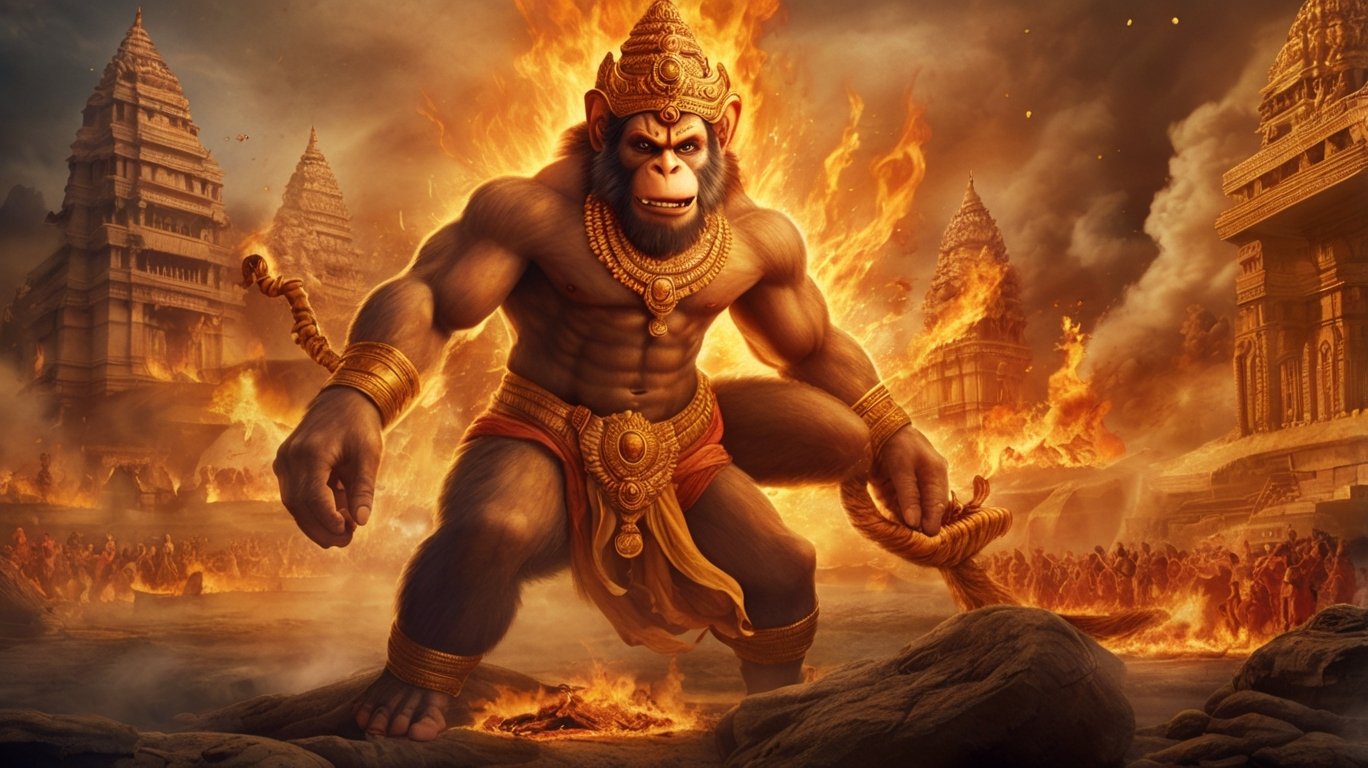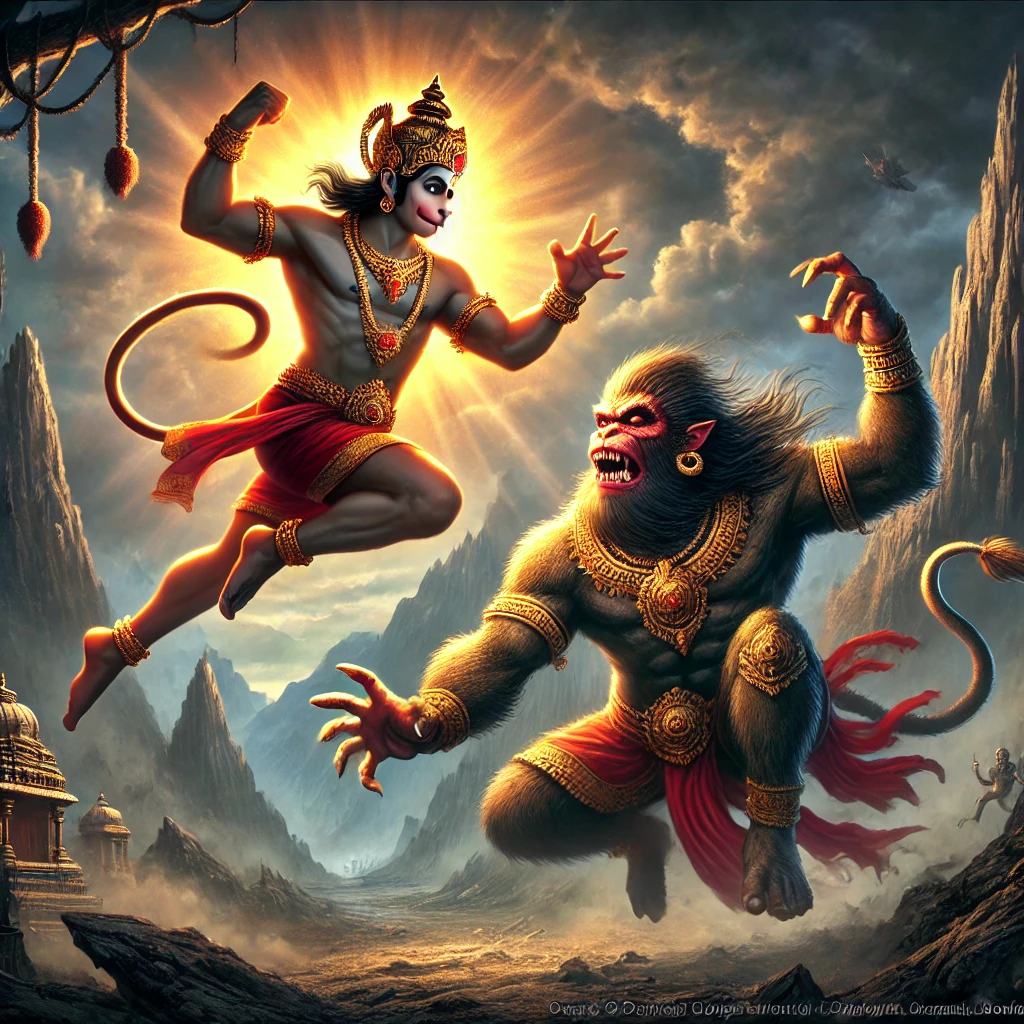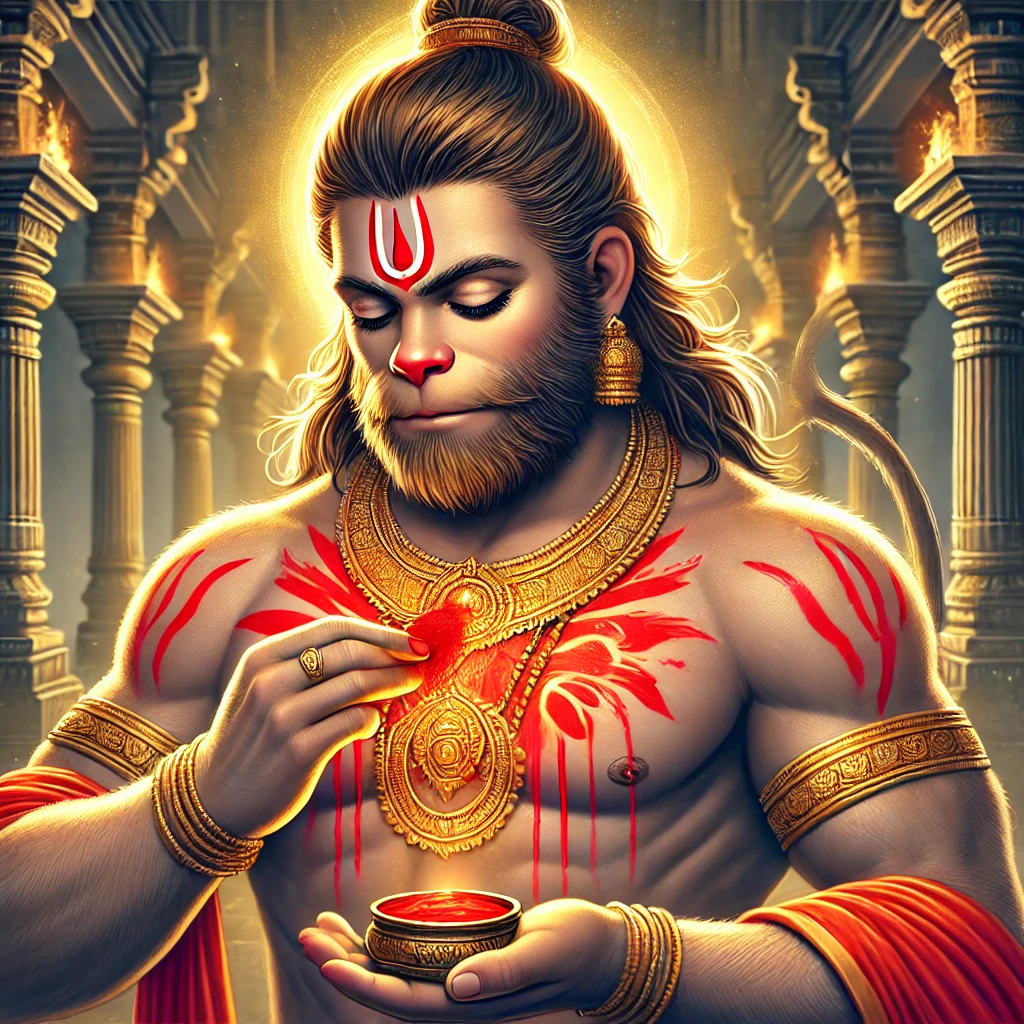Table of Contents
Introduction
Welcome to Bedesii.com!
We are delighted to have you here as we embark on a journey through the rich tapestry of spirituality, devotion, and the timeless wisdom of sacred texts. In today’s blog, we will explore the profound relationship between Rama and Hanuman, unraveling the messages embedded in their divine connection. Expect to delve into inspiring verses of Sundarkand Explanation in English, uncover the essence of devotion, and discover lessons that resonate deeply with our lives. Join us in celebrating the beauty of spiritual teachings that inspire inner peace, positivity, and growth. Let’s dive into the heart of devotion together!
Doha
Janakasutahi samujhai kari bahu bidhi dhiraju dinha,
Charana kamala siru nai kapi gavanu Rama pahi kinha.
Explanation
After discovering Sita in the Ashoka Vatika, Hanuman approached her with great reverence and spoke to her gently, offering many words of comfort and reassurance. He carefully explained his mission as Lord Rama’s messenger and reminded her of the power and devotion that Lord Rama held for her. Hanuman encouraged Sita to remain steadfast and not lose hope, assuring her that Rama was preparing to rescue her.
Sita, distressed by her long separation from Lord Rama, found solace in Hanuman’s words. She was overwhelmed with gratitude for his courage in reaching her. Hanuman, seeing her emotional state, offered her strength, urging her to stay patient and reminding her that Rama’s love was unbreakable.
After offering his heartfelt advice, Hanuman bowed respectfully at her feet, his head touching the ground in humble reverence. With his duty fulfilled and a renewed sense of purpose, Hanuman set out to return to Lord Rama. His heart was filled with devotion, and his mind focused on delivering the good news of Sita’s safety to his beloved Lord.
This moment captures the tender and unwavering devotion Hanuman has not only to Lord Rama but also to Sita, assuring her that hope and rescue are near.
Chaupai
Chalata mahadhuni garjesi bhari, garbha sravahi suni nisichara nari.
Naghi sindhu ehi parahi ava, sabada kilikila kapinha sunava.
Harashe saba biloki hanumana, nutana janma kapinha taba jana.
Mukha prasanna tana teja biraja, kinhesi Ramachandra kara kaja.
Mile sakala ati bhae sukhari, talaphata mina pava jimi bari.
Chale harashi raghunayaka pasa, puchhata kahata navala itihasa.
Taba madhubana bhitara saba aye, angada sanmata madhu phala khae.
Rakhavare jaba barajana lage, mushti prahara hanata saba bhage.

Explanation
As Hanuman sped away with a thunderous roar, the demonesses were so terrified that they felt as if their very existence was trembling. He soared across the ocean once again, returning to the shore where the waiting monkeys cheered at the sound of his arrival.
The Vanaras rejoiced upon seeing Hanuman. They felt a renewed energy, as if they were reborn with hope. Hanuman’s radiant face and glowing presence showed that he had accomplished Lord Rama’s task, bringing peace and happiness to all.
Filled with immense joy, the monkeys gathered around Hanuman like fish rejoicing after finding water. They eagerly rushed toward Lord Rama’s camp, celebrating and discussing the new developments.
As they reached the Madhuvana (the forest of honey), they sought Angad’s permission to feast on the sweet fruits. The guards tried to stop them, but the monkeys, in their excitement and strength, fought back, driving the guards away and happily enjoying the fruits of the forest.
Doha
Jai pukare te sab ban ujaar jubraj,
Suni Sugriva harasha kapi kari aye prabhu kaja.
Explanation
The monkeys, after destroying the forest in their excitement, began to shout praises for their prince, Angad. Their victory cries echoed through the jungle, signifying the success of their mission.
Upon hearing these triumphant cheers, King Sugriva was filled with immense joy. He realized that Hanuman and the others had successfully completed Lord Rama’s task and were now returning with good news. The accomplishment of this important mission brought great happiness to everyone.
Chaupai
jau na hoti sita sudhi pai, madhubana ke phala sakahi ki khai.
ehi bidhi mana bichara kara raja, ai gyi kapi sahita samaja.1.
ai sabanhi nava pada sisa, mileu sabanhi ati prema kapisa.
puchhi kusala kusala pada dekhi, Rama kripa bha kaju biseshi.2.
natha kaju kinheu hanumana, rakhe sakala kapinha ke prana.
suni sugriva bahuri tehi mileu, kapinha sahita raghupati pahi chaleu.3.
Rama kapinha jaba avata dekha, kie kaju mana harasha bisesha.
phatika sila baithe dvau bhai, pare sakala kapi charananhi jai
Explanation
Hanuman and the monkey troops were returning joyfully after completing their mission. On their way, the monkeys indulged in eating fruits from the Madhuvana forest. King Sugriva, wise and thoughtful, knew that the monkeys would not have dared to eat the forest’s fruits if they had failed to find Sita. This realization filled him with optimism about the outcome of their mission.
When the group finally arrived, they all bowed their heads respectfully before Sugriva. The monkeys were overjoyed as they greeted their beloved king. Sugriva asked them about their journey, and from their joyful expressions, it was clear that Lord Rama’s grace had ensured the success of the task.
Hanuman was praised for leading the mission and saving everyone’s lives. Hearing this, Sugriva embraced Hanuman with immense gratitude, acknowledging his vital role. Soon after, they set off together to meet Lord Rama, taking all the monkeys along.
When Rama saw the returning monkey warriors, his heart filled with special joy. Both Rama and Lakshmana sat on a crystal-clear rock, waiting eagerly. As soon as the monkeys arrived, they all fell at Rama’s feet, expressing their devotion and love for him.
Doha
priti sahita saba bhete raghupati karuna punja,
puchi kusala natha aba kusala dekhi pada kanja.
Explanation
With hearts full of love and devotion, all the monkeys respectfully greeted Lord Rama, who is the embodiment of compassion. Rama, in his gentle manner, asked them about their well-being. However, instead of answering directly, they expressed that their true joy and well-being now came from seeing his divine feet and knowing they had succeeded in their mission.
Chaupai
jamavanta kaha sunu raghuraya, ja para natha karahu tumha daya.
tahi sada subha kusala nirantara, sura nara muni prasanna ta upara.
soi bijai binai guna sagara, tasu sujasu trailoka ujagara.
prabhu ki kripa bhayau sabu kaju, janma hamara suphala bha aju.
natha pavanasuta kinhi jo karani, sahasahu mukha na jai so barani.
pavanatanaya ke charita suhae, jamavanta raghupatihi sunae.
sunata kripanidhi mana ati bhae, puni hanumana harashi hiya lae.
kahahu tata kehi bhati janaki, rahati karati raccha svaprana ki
Explanation
Jambavan, the wise bear, spoke humbly to Lord Rama, “O Lord of the Raghu dynasty, those upon whom you bestow your grace are always blessed and prosperous. The gods, humans, and sages alike find joy in their presence. Such a person, full of virtues, conquers all challenges, and their glory shines across the three worlds.
By your grace, our task has been fulfilled today, and our lives feel truly blessed. O Lord, what Hanuman has accomplished is beyond words, even if we had a thousand mouths to speak his praises. His deeds are incomparable.”
Jambavan then narrated the wondrous acts of Hanuman to Lord Rama. As Rama, the ocean of compassion, listened, his heart filled with joy. He embraced Hanuman with love and asked him eagerly, “Tell me, dear son, how is Sita? How is she protecting her life amidst such great danger?”
Doha
nama paharu divasa nisi dhyana tumhara kapata,
lochana nija pada jantrita jahi prana kehi bata.
Explanation
Lord Rama, deeply concerned, continued, “Sita spends her days and nights guarded by the constant recitation of my name. She meditates on me without deceit or pretense, her heart and mind fixed solely on my form. Her eyes remain transfixed upon my feet, and she sustains her life through this unwavering devotion. But tell me, how else does she find strength in this unbearable separation?”
In this way, Rama expressed his heartfelt empathy and concern for Sita’s well-being, showing his deep connection with her through the bond of love and faith.
Chaupai
chalata mohi churamani dinhi, raghupati hridaya lai soi linhi.
natha jugala lochana bhari bari, bachana kahe kachu janakakumari.1
anuja sameta gahehu prabhu charana, dina bandhu pranatarati harana.
mana krama bachana charana anuragi, kehi aparadha natha hau tyagi.2.
avaguna eka mora mai mana, bichurata prana na kinha payana.
natha so nayananhi ko aparadha, nisarata prana karahi hathi badha.3.
Biraha agini tanu tool sameera, swaas jarai chhan maahin sareera.
Nayan sravahin jalun nija hita laagi, jarein na paanv deha birhaagi.
sita kai ati bipati bisala, binahi kahe bhali dinadayala.
Explanation
As the divine conversation unfolded, Hanuman spoke with reverence, holding the jewel of his devotion close to his heart. “O Lord Rama,” he said, “with eyes filled with tears, I bring you the words of Sita, the daughter of King Janak. She embraces your lotus feet, seeking refuge from her trials.”
Hanuman, filled with love and loyalty, continued, “With all her heart, she longs for you. Though separated from you, she has not let go of her unwavering faith. Even in her pain, she seeks only your presence, for her mind, body, and words are all devoted to you, my Lord.”
He expressed the agony Sita endured, comparing her heartache to a burning fire. “Her separation is like the fiercest flames, consuming her from within. She sheds tears like a river, longing for your return, her spirit entwined with yours. Without you, the days feel like an eternity, and every moment is steeped in sorrow.”
With these words, Hanuman painted a vivid picture of Sita’s plight, urging Lord Rama to take swift action to reunite with her, highlighting the depths of her love and devotion that remained unshaken despite the challenges she faced.
FAQs
What did Hanuman say to Ram?
Hanuman expressed profound devotion and respect to Lord Rama. He conveyed messages of loyalty and dedication, often reassuring Rama of his unwavering support. For instance, when Hanuman met Rama for the first time, he introduced himself as the servant of Rama, ready to serve him in any capacity.
What is Hanuman to Rama?
In Hanuman Chalisa, sage tulsidas mentioned that Hanuman is like Bharath to Rama (Tum mam priya bharath sam bhai), a symbol of unwavering faith and loyalty. He is often referred to as Rama’s friend, disciple, brother and ally in the battle against Ravana. Their relationship is characterized by deep love, respect, and mutual admiration.
How did Hanuman prove his devotion to Rama?
Hanuman proved his devotion through numerous acts of bravery and loyalty, most notably by jumping across the ocean to reach Lanka to deliver Rama’s message to Sita. He also fought valiantly against Ravana’s forces, showcased his strength by lifting mountains (to bring back the Sanjeevani herb), and dedicated his life to serving Rama’s cause.
Hanuman and Ram story
The story of Hanuman and Rama is central to the Ramayana, illustrating their bond through trials and tribulations. Hanuman helps Rama locate Sita after she is abducted by Ravana, assists in the battle against Ravana’s army, and embodies the ideal devotee who overcomes challenges with faith and courage.
Why did Lord Ram fight Hanuman?
In the story “War Between Rama and Hanuman,” Sage Vishwamitra, angered by disrespect from the King of Kashi, commands Lord Rama to kill him. The terrified King seeks protection from Hanuman’s mother, Anjana, who instructs her son to defend the King against Rama. A battle ensues, but Hanuman’s unwavering devotion renders Rama’s arrows ineffective. Sage Vishwamitra intervenes, realizing that true devotion can overcome conflict. The tale highlights the power of faith and loyalty in transcending challenges.
What did Hanuman do after Ram died?
After Lord Rama’s departure from the earth, Hanuman continued to live as a devoted servant, maintaining his role as a protector of dharma. According to some beliefs, he is said to remain in the world, offering blessings and support to those who invoke him with love and devotion.
Read Also
Sundarkand Part 1 | Sundarkand Part 2 | Sundarkand Part 3 | Sundarkand Part 4 | Sundarkand Part 5 | Sundarkand Part 6 | Sundarkand Part 7 | Sundarkand Part 8 | Sundarkand Part 10
Important Links
Hanuman Chalisa in Hindi | Hanuman Chalisa in Kannada |Hanuman Chalisa in Bengali | Bajrang Baan in English | Hanuman Ashtak | Hanuman Chalisa in Assamese







